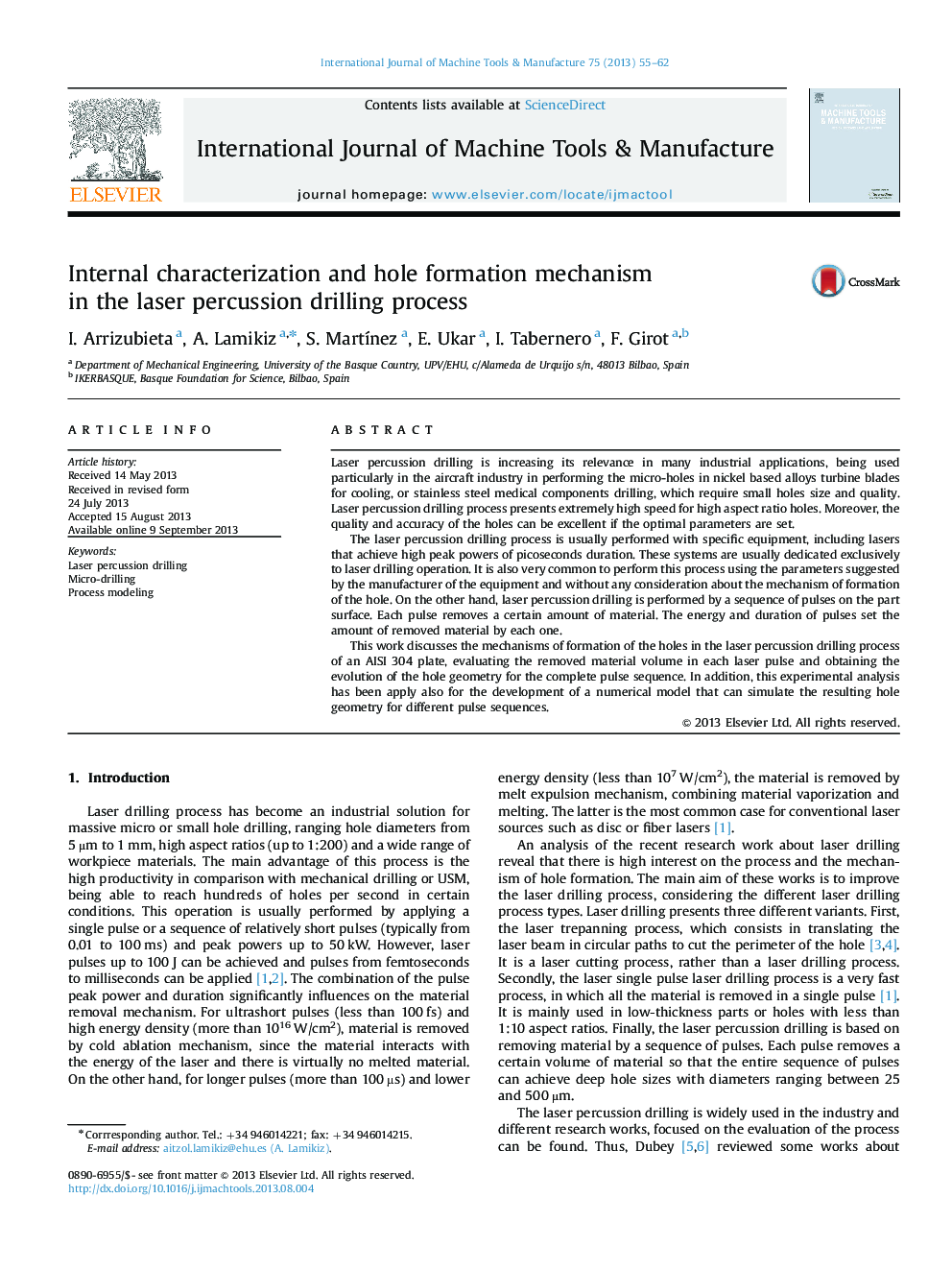| Article ID | Journal | Published Year | Pages | File Type |
|---|---|---|---|---|
| 781611 | International Journal of Machine Tools and Manufacture | 2013 | 8 Pages |
•Laser percussion drilling tests were carried out on a 1 mm thick AISI 304 stainless steel sheet.•Process show high repeatability and inlet diameter ranges 140–150 µ for a 100 µ spot size.•Internal shapes of the holes have been measured, reconstructing the internal volume.•A thermal model has been developed to predict the resulting shape of the holes.•The validation of the model shows that the agreement between the model and measured values is below 10% of error.
Laser percussion drilling is increasing its relevance in many industrial applications, being used particularly in the aircraft industry in performing the micro-holes in nickel based alloys turbine blades for cooling, or stainless steel medical components drilling, which require small holes size and quality. Laser percussion drilling process presents extremely high speed for high aspect ratio holes. Moreover, the quality and accuracy of the holes can be excellent if the optimal parameters are set.The laser percussion drilling process is usually performed with specific equipment, including lasers that achieve high peak powers of picoseconds duration. These systems are usually dedicated exclusively to laser drilling operation. It is also very common to perform this process using the parameters suggested by the manufacturer of the equipment and without any consideration about the mechanism of formation of the hole. On the other hand, laser percussion drilling is performed by a sequence of pulses on the part surface. Each pulse removes a certain amount of material. The energy and duration of pulses set the amount of removed material by each one.This work discusses the mechanisms of formation of the holes in the laser percussion drilling process of an AISI 304 plate, evaluating the removed material volume in each laser pulse and obtaining the evolution of the hole geometry for the complete pulse sequence. In addition, this experimental analysis has been apply also for the development of a numerical model that can simulate the resulting hole geometry for different pulse sequences.
